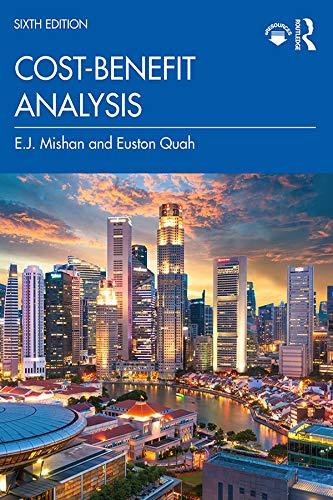Better Company recorded the following transactions in Year 2: 1. On January 2. paid $2.500 in wages due from Year 1. 2. On July 1, paid $24.000 in advance to lease retail space for one year. Under the terms of its lease, Better Company makes this payment every July 1. 3. Received $2,000 cash in advance for services to be performed in December Year 2 and January Year 3. 4. Purchased $2,000 of supplies for cash. 5. Purchased 5,000 units of inventory at $5 each on account. 6. Sold 5,500 units of inventory for $15 each on account, Better Co. uses the FIFO cost flow assumption. 7. Collected $75,000 from customers on account. 8. Paid for operating expenses with cash of $15,000. 9. Paid $30,000 on accounts payable. 10. Paid a $5.000 cash dividend to the stockholders. 11. Made the yearly required payment on the note payable. The note carries a 5% interest rate and requires payments of $9.713 each December 31. Information for Year 2 adjusting entries: 12. The advance payment for rental of retail space (Event 2) was made on July 1 for a one- year term. The beginning balance in Prepaid Rent originated from the payment made July 1. Year 1. 13. The cash advance for services to be provided in the future (Event 3) was collected on December 1 and the two-month contract started on that day. 14. $300 of supplies remain on hand at the end of the month. 15. $2,000 of wages have been earned by employees but not yet paid. Better Company had the following account balances at January 1. Year 2: Accounts Payable, $10,000; Accounts Receivable, $15,000: Cash $100,000: Common Stock $50,000; Inventory. $9.000 (2.000 units @ $4.50 each): Land, $50,000: Notes Payable. $75,000: Prepaid Rent. $12,000; Retained Earnings. $49.200; Supplies. $700; Wages Payable $2.500. Other accounts used by Better Company: Cost of Goods Sold. Dividends. Interest Expense, Operating Expenses, Rent Expense, Supplies Expense. Unearned Revenue. Required: 1. Add labels to the first blank line in the horizontal balance sheet to reflect the components: Assets, Liabilities, and Stockholder's Equity 2. Add the asset, liability, and stockholders' equity accounts to the second blank line in the horizontal statements model provided, grouping them according to the appropriate component of each statement. List their beginning balances where indicated. 3. Record the transactions in the appropriate general ledger accounts. 4. What is Better Company's Net Income for the Year 22 5. Compute the following for Better Company for Year 2: (a) Current ratio: (b) Average days to collect receivables: (c) Average days to sell inventory: (d) Debt-to-equity ratio Balance Sheet | Acct pay respon Wages Comstock Ret. Een Assets Cash Accts Rec. | Inventory and Beg 100,000 15,000 9.16 1 1-2500 2 - 24,000 2,500 2 3 4 5 6a 6b 7 8 9 10 11 12 13 14 15 End Better Company recorded the following transactions in Year 2: 1. On January 2. paid $2.500 in wages due from Year 1. 2. On July 1, paid $24.000 in advance to lease retail space for one year. Under the terms of its lease, Better Company makes this payment every July 1. 3. Received $2,000 cash in advance for services to be performed in December Year 2 and January Year 3. 4. Purchased $2,000 of supplies for cash. 5. Purchased 5,000 units of inventory at $5 each on account. 6. Sold 5,500 units of inventory for $15 each on account, Better Co. uses the FIFO cost flow assumption. 7. Collected $75,000 from customers on account. 8. Paid for operating expenses with cash of $15,000. 9. Paid $30,000 on accounts payable. 10. Paid a $5.000 cash dividend to the stockholders. 11. Made the yearly required payment on the note payable. The note carries a 5% interest rate and requires payments of $9.713 each December 31. Information for Year 2 adjusting entries: 12. The advance payment for rental of retail space (Event 2) was made on July 1 for a one- year term. The beginning balance in Prepaid Rent originated from the payment made July 1. Year 1. 13. The cash advance for services to be provided in the future (Event 3) was collected on December 1 and the two-month contract started on that day. 14. $300 of supplies remain on hand at the end of the month. 15. $2,000 of wages have been earned by employees but not yet paid. Better Company had the following account balances at January 1. Year 2: Accounts Payable, $10,000; Accounts Receivable, $15,000: Cash $100,000: Common Stock $50,000; Inventory. $9.000 (2.000 units @ $4.50 each): Land, $50,000: Notes Payable. $75,000: Prepaid Rent. $12,000; Retained Earnings. $49.200; Supplies. $700; Wages Payable $2.500. Other accounts used by Better Company: Cost of Goods Sold. Dividends. Interest Expense, Operating Expenses, Rent Expense, Supplies Expense. Unearned Revenue. Required: 1. Add labels to the first blank line in the horizontal balance sheet to reflect the components: Assets, Liabilities, and Stockholder's Equity 2. Add the asset, liability, and stockholders' equity accounts to the second blank line in the horizontal statements model provided, grouping them according to the appropriate component of each statement. List their beginning balances where indicated. 3. Record the transactions in the appropriate general ledger accounts. 4. What is Better Company's Net Income for the Year 22 5. Compute the following for Better Company for Year 2: (a) Current ratio: (b) Average days to collect receivables: (c) Average days to sell inventory: (d) Debt-to-equity ratio Balance Sheet | Acct pay respon Wages Comstock Ret. Een Assets Cash Accts Rec. | Inventory and Beg 100,000 15,000 9.16 1 1-2500 2 - 24,000 2,500 2 3 4 5 6a 6b 7 8 9 10 11 12 13 14 15 End








